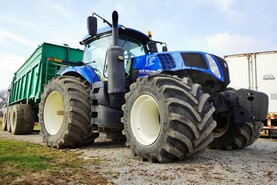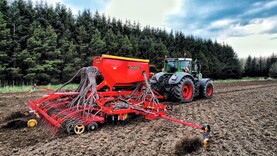A research study conducted on two different types of soil has found that soil compaction as a result of livestock and machinery has a significant impact on grass silage yields.
The first site was at Scotland’s Rural College (SRUC) in Dumfries, where the soils are imperfectly-drained silty clay loam. The other was at Harper Adams University in Shropshire, where soils are free-draining sandy loam.
Compaction pressures
Each site had three blocks, including one control with no intended compaction. The other two were subject to similar compaction pressures each year, with one getting trampled by heifers and the other getting driven over by a weighted tractor.
By the third year, dry matter grass yields for the livestock-trampled block was down 11.4% at SRUC and down 12% at Harper Adams, compared with the control.
On the tractor compaction blocks, grass yields were 14.5% lower than the control on both sites.
The study, published in European Journal of Agronomy, found that the largest drop in yields on compaction blocks was seen each year at first-cut silage.
Read more
Successful trial on sheep herding with drones
Farming robot on show at Ploughing
A research study conducted on two different types of soil has found that soil compaction as a result of livestock and machinery has a significant impact on grass silage yields.
The first site was at Scotland’s Rural College (SRUC) in Dumfries, where the soils are imperfectly-drained silty clay loam. The other was at Harper Adams University in Shropshire, where soils are free-draining sandy loam.
Compaction pressures
Each site had three blocks, including one control with no intended compaction. The other two were subject to similar compaction pressures each year, with one getting trampled by heifers and the other getting driven over by a weighted tractor.
By the third year, dry matter grass yields for the livestock-trampled block was down 11.4% at SRUC and down 12% at Harper Adams, compared with the control.
On the tractor compaction blocks, grass yields were 14.5% lower than the control on both sites.
The study, published in European Journal of Agronomy, found that the largest drop in yields on compaction blocks was seen each year at first-cut silage.
Read more
Successful trial on sheep herding with drones
Farming robot on show at Ploughing






 This is a subscriber-only article
This is a subscriber-only article










SHARING OPTIONS: